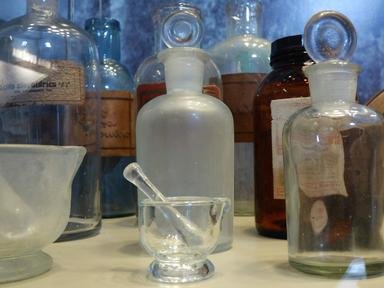Quiz Answer Key and Fun Facts
1. One of the most abundant elements found in both the universe and the human body; the defining ingredient of an organic compound.
2. Element used in the production of stainless steel as, despite its colourful name, it is a silvery metal that can be highly polished to produce a shiny finish.
3. Named after the island of Cyprus and has the symbol Cu; often found going green on the roofs of buildings (because of oxidation).
4. Radioactive member of the actinide series that was named after two people famed for their work on radioactivity.
5. Found in limestone and gypsum, this metal is vitally important for healthy bones and teeth.
6. A halogen with atomic number 17; it is used to disinfect both drinking water and swimming pools, but has also been used as a chemical weapon.
7. Can be used to create a beautiful blue pigment but also turns up in the batteries that power mobile devices and electric cars.
8. Lanthanide with atomic number 58 that is the most abundant of the (not so rare) rare-earth elements.
9. Gold-coloured highly reactive metal that melts at just 28.5 degrees Celsius. It is used in atomic clocks.
10. A synthetic transactinide element that was officially named - and given the symbol Cn - on the 537th anniversary of the birth of the famous scientist after which it is named.
Source: Author
Fifiona81
This quiz was reviewed by FunTrivia editor
rossian before going online.
Any errors found in FunTrivia content are routinely corrected through our feedback system.
